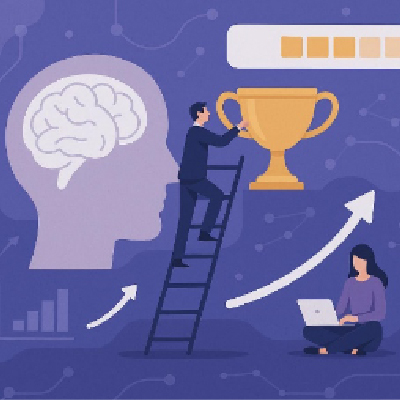Gamification in Corporations: Psychological Insights into Employee Engagement Strategies | Vikas Bharti | Psychologist
 In the modern workplace, employee engagement is pivotal to organizational success. As businesses grapple with challenges like low motivation and high turnover, gamification has emerged as a transformative strategy to enhance engagement. By incorporating game-like elements into work processes, corporations leverage psychological principles to motivate employees, boost productivity, and foster a sense of achievement. Gamification taps into intrinsic and extrinsic motivation, two key drivers of human behavior. Intrinsic motivation arises from personal satisfaction and interest, while extrinsic motivation stems from external rewards like recognition or incentives. Game mechanics such as points, leaderboards, and badges address both forms of motivation, making routine tasks more engaging.
In the modern workplace, employee engagement is pivotal to organizational success. As businesses grapple with challenges like low motivation and high turnover, gamification has emerged as a transformative strategy to enhance engagement. By incorporating game-like elements into work processes, corporations leverage psychological principles to motivate employees, boost productivity, and foster a sense of achievement. Gamification taps into intrinsic and extrinsic motivation, two key drivers of human behavior. Intrinsic motivation arises from personal satisfaction and interest, while extrinsic motivation stems from external rewards like recognition or incentives. Game mechanics such as points, leaderboards, and badges address both forms of motivation, making routine tasks more engaging.
Key psychological principles that underpin gamification include goal setting, immediate feedback, social dynamics, and autonomy. Clear and achievable objectives, akin to levels or milestones in games, provide employees with a sense of direction and accomplishment. Instant recognition of progress, such as earning points or unlocking rewards, reinforces positive behavior and sustains engagement. Leaderboards and team-based challenges foster healthy competition and collaboration, leveraging the human desire for social connection and recognition. Offering employees choices in how they participate empowers them, enhancing their sense of control and satisfaction.
Gamification finds diverse applications in corporations. In training and development, gamified learning platforms transform traditional sessions into interactive experiences, making learning enjoyable and memorable through
quizzes, simulations, and skill-building games. For performance management, incorporating game elements like dashboards and progress tracking into performance reviews makes evaluations more engaging and transparent. Sales
and incentives benefit from gamifying sales targets with real-time leaderboards and reward systems, motivating teams to excel while maintaining a competitive edge. Employee wellness programs, such as step challenges or mindfulness streaks, are also gamified to encourage consistent participation and foster a sense of community. Additionally, virtual escape rooms, problem-solving challenges, and team quests are used to strengthen workplace bonds and improve communication.
The benefits of gamification are manifold
It increases engagement by making tasks enjoyable, leading to higher participation and enthusiasm.
It enhances productivity by making work processes interactive and rewarding, thereby boosting individual and team performance.
Engaged employees are more likely to remain loyal to the organization, reducing turnover and associated costs.
Gamified approaches to training also enhance learning retention and the application of new skills. Despite these benefits, gamification must be thoughtfully implemented to avoid potential pitfalls.
Overemphasis on rewards can diminish intrinsic motivation, while poorly designed systems may lead to frustration. It is crucial to align gamification strategies with organizational goals and employee
preferences to ensure meaningful engagement.
As technology evolves, the potential for gamification in corporations will expand. Advances in virtual reality, artificial intelligence, and data analytics will enable more personalized and immersive gamified experiences. By harnessing psychological insights and innovative technologies, corporations can create a thriving work environment that empowers and engages employees, driving long-term success.


